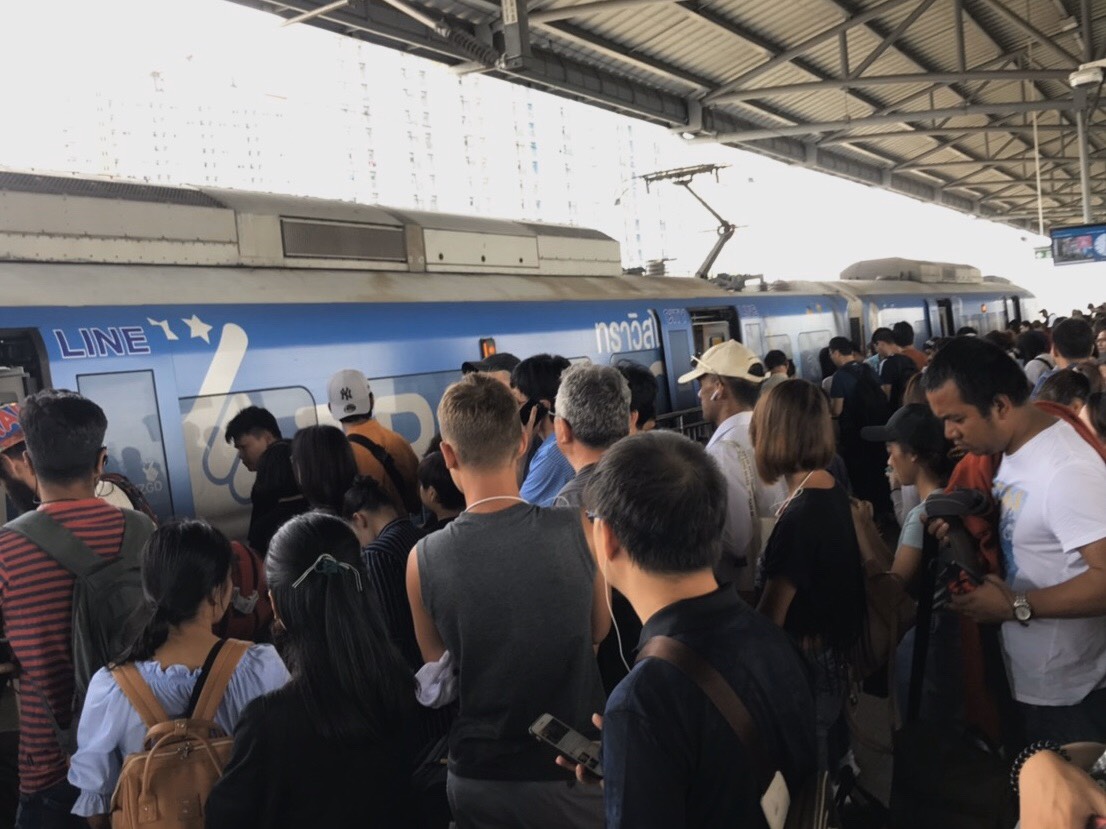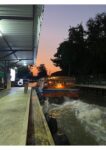Photo Credit: author (2018). ARL’s HuaMak Station in the morning.
The Bangkok Mass Transit Master Plan is 475.05 kilometers worth of railway expansion of the BTS, MRT and Airport Rail Link in Bangkok. Specifically, the BMT is looking to introduce 8 new lines which branches farther outwards from the center of Bangkok. On paper, this plan is a good step forward for developing the city. These rail systems provide a fast and affordable method for the Thai population to commute. This is especially important as Bangkok is a city with one of the worst traffic congestions in the world. Bangkok’s automobile crisis is a crucial problem to tackle but is beyond the scope of this piece. Instead, I will focus on the BMT and why I believe that it will cause more harm than good.
From the perspective of riders, their cost of travel is separated into monetary cost and time cost. The monetary cost is the fare of taking the train. This varies depending on the distance traveled and may rise even more for those that switch from one system to another (like I do just to get to the university every day). The time cost for the rider is an aspect that seem to be forgotten. A way to analyse the full time cost is to break it down into two components: access time and in-vehicle time. The access time is defined as the time needed to travel from home to the station and from the station to the destination. This includes the waiting time for the train.
The in-vehicle time is simply the time spent travelling in the vehicle, in this case the train. Due to the nature of a rail system, the in-vehicle time is entirely dependent on distance as there is no traffic to consider.
This distinction is important as the rail system is a mainline system which requires its riders to travel to the station instead of being picked up like the bus system. Furthermore, the consideration of wait time is also important as it varies greatly depending on time. During rush hour, passengers may have to wait for a couple of trains to pass by before being able to get on.
With this in mind, we can analyse the BMT and its consequences. The expansion of the rail system outwards will result in an increase in the cost of operations countered by the rise in the number of users as the new stations make it more convenient for those living near the stations to use them. This will have two effects. The increase in costs will most likely be countered, at first, by an increase in the fare or monetary cost. This is also worsened as these new stations are opening farther and farther away from Bangkok’s CBD. This increases the cost as it is dependent on distance traveled.
Furthermore, if the number of riders increase but to a fixed number of trains, this could greatly increase the time cost. Currently, the BTS’s Siam, MRT’s Sukhumvit and ARL’s Makkasan stations are infamous for being too crowded in the evening, so much so that the number of riders waiting for trains exceed the capacity of the platforms. This problem can only be made worse with the expansion of the lines as there are not enough trains to satisfy the demand for them in these peak hours. This is crucial as some of these passengers depend on the rail system for their livelihood either for work or education. Referring back to our equation, this is a sharp increase in access time as the time it takes to get on a train will rise as passengers have to wait longer due to queues and overcrowdedness.
I am not saying that the rail system cannot increase the number or trains. However, history has shown numerous problems in the process of doing so. For example, approval for new trains in the ARL were granted in 2012 but was delayed until 2017 due to a corruption scandal. New trains will not be in service until late 2018. Alternatively, early in 2019, the MRT introduced new trains which actually led to longer waiting times. This is due to a slow process of integrating the new trains into the system and adjusting existing trains to a new schedule. This led to daily system errors and further delays. At worst, an entire train’s worth of passengers were asked to come off the train which led to overcrowding in their very limited platforms, causing further delays.
I believe that although we should increase the number of people with access to the rail service, we should not do it at the expense of those who are already using it. Instead of this massive outward expansion, I would propose improving accessibility and the performance of existing stations. There are many problems that should be solved from the delays, overcrowdedness and long intervals between trains. Improvements on existing infrastructure will ensure a more effective system is used in Bangkok’s efforts to counter its roadway congestion.
References
McCarthy, N (2019). The World’s Worst Cities for Traffic Congestion [Infographic]. https://www.forbes.com/sites/niallmccarthy/2019/06/05/the-worlds-worst-cities-for-traffic-congestion-infographic/#c899bca12bcf
O’Sullivan, A (2012). Urban Economics (8th ed.)












































I can actually relate to the situation mentioned in the article as I have to take the MRT to the university every day. And during the transition of the new trains with the new system, I had to wait for a tremendous amount of time, making my trip to the university much longer and more inconvenient. As commuters have to face longer waiting times, the platforms get more and more crowded each minute the train is delayed, worsening the customer journey.
However, as time pass by, the new system becomes more stable and makes the trip much faster than during the transition period. Nevertheless, these mass rapid transits still cannot deal with their passengers during the rush hour. They have to restrict people from getting into the station, closing the platform because it is too crowded.
Despite all the inconvenience of the current train systems, I still think it is a good idea for these trains to be expanded outward, but as the author said, they have to make the present one more efficient first. This could be done by adding more trains into the system to due with more passengers and longer distance. Once everything is in place, expanding the lines would give more accessibility to those living further out of the city, improving the standard of living. In the longer term where the train systems are efficient, and people can travel across places more easily, more and more people will take the trains as substitutes for their personal vehicles. As a result, road congestion could be improved.
In my opinion, the outward expansion should not be considered a mistake.
I get the point that the expansion should not create more burden for existing users. However, I still consider the expansion’s positive effects outweigh the negative effects. More citizens will have more choices and be able to use the transit system which is a safer way than others. New users should be able to access rail system and not being seen as burden to existing users. Both types of users are responsible to the more crowded station together.
To delay the access to transit system until other problems like overcrowding are solved shows that the system values passengers in urban area more than others. Public transportation is for everyone in the city not for only ones who live in the urban area and the expansion of rail system is the key.
There is indeed a lot of problems within the existing services, but I disagree with your argument for not expanding outwards. People living away from the city center deserve to have better public transportation system as much as those who live in the inner city. More public transportation choices will also mean less congestion and hopefully less pollution from private cars.
As for the poor performance of existing lines, I agree that there should be improvements which can be done simultaneously with the expansion of new lines.